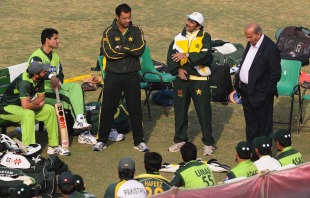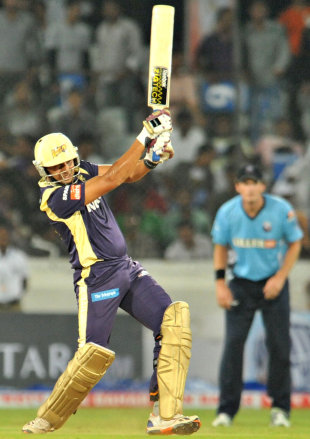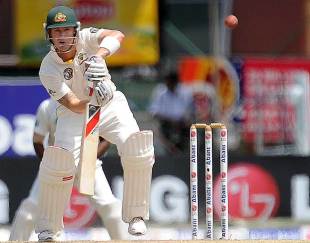Be in touch with your softer side, but don't be afraid to take an eye for an eye when needed

| "... And if anyone has a problem, I'm only too happy to put them over my knee and spank them" |
| Enlarge |
What does the ideal candidate for coach of the Pakistan cricket team look like?
First and foremost, he is actually a she. I envisage a stocky little thing, clad in an elegant shalwar-kameez, with deceptively strong hands, and a faint whiff of garlic, ginger and menopause. Pakistani men are second only to Italians when it comes to loving their mothers. A nurturing, commanding maternal figure would immediately quell the rank indiscipline that has afflicted the side for two decades.
To avoid accusations of regional bias, she has a mother from Lahore, a father from Karachi, and a husband from Peshawar (who himself has four lines of lineage: a separate tribal affiliation from each grandparent). She has done voluntary work for an NGO in Balochistan, is politically neutral on Kashmir, and went to boarding school in England. Just to be safe, she bans Punjabi and Pashto from the dressing room and enrolls the entire squad for Esperanto classes.
She has interned at Barcelona's famous La Mastia football academy, where she was in charge of new eight-year-old recruits. Thus she knows how to train hyper-talented sportsmen with little education and a penchant for silliness, bullying and speaking without thinking.
To address the team's chronic issues with diet and fitness, she has a PhD in nutrition. She can make a mean tofu nihari and chicken tikka ravioli.
Her living room has four dart-boards on the wall, with the bellies of Inzamam, Ranatunga and the old Samit Patel pictured around the bull's eye and a Mughal-esque miniature of Ijaz Butt riding a horse off a cliff as the centrepiece: I am painting a picture, after all, of an ideal world.
Her bedside table reading includes Bob Woolmer's The Art and Science of Cricket, Mike Brearley's The Art of Captaincy, Mohammed Hanif's new novel and Hanif Mohammad's autobiography. She has never read a book about Imran Khan and she never will.
Her interest in cricket is forensic and obsessive, but she also finds time for other sources of mental advancement. As the ideal coach she is a demon poker player (she can read a man), a keen gardener (she can read a pitch), and her favourite film is Any Given Sunday (she can read subtitles when Al Pacino does his trademark shouting act).
She also once went to Saudi Arabia and studied the legal system for a while, just for fun. (She is an eccentric in the extreme. You don't have to be mad to do this job but... no, actually you do.) Her curiosity was piqued by the practice of chopping off the hands of thieves. For this reason her first act on being appointed coach is to pay a visit to Salman Butt. She goes ostensibly for talks about a comeback, and comes back with a severed left hand adorned with gaudy jewellery acquired in Dubai. She shoves a stake through the hand and hangs it over the gates of Gaddafi Stadium. She renames Gaddafi Stadium the Al Pacino Stadium.
Finally, our ideal coach has a sense of humour. She will need it. Let me remind all Page 2 readers, particularly those who fit the above profile, that the Pakistan Cricket Board is currently accepting applications. Failing that, we can always just get Javed Miandad in drag.
Imran Yusuf lives in Karachi and works for the Express Tribune


